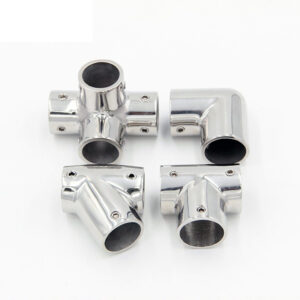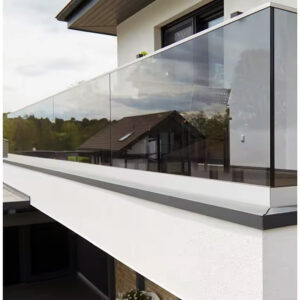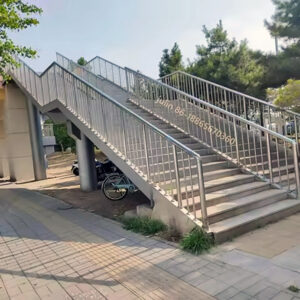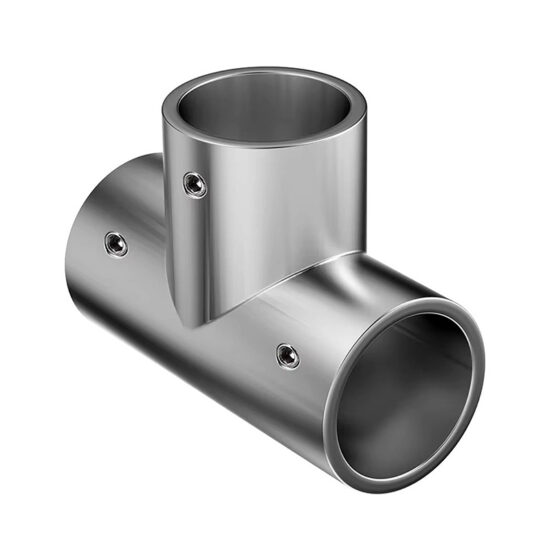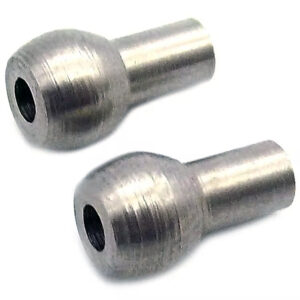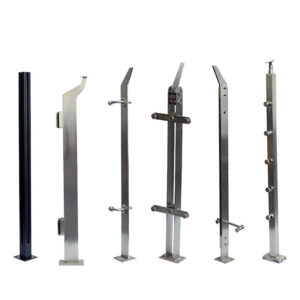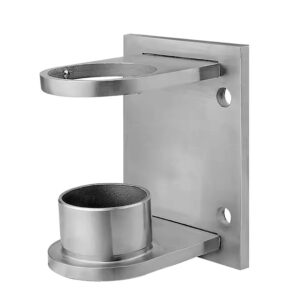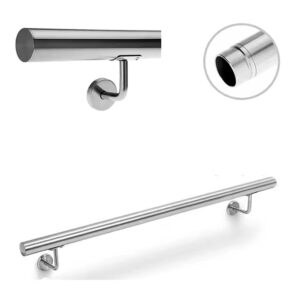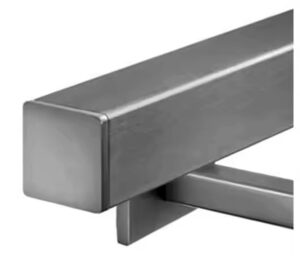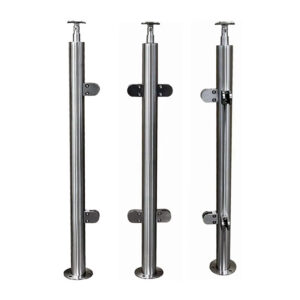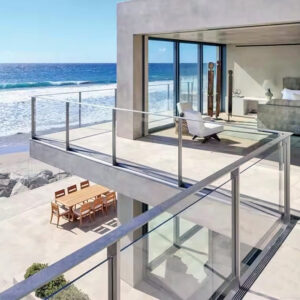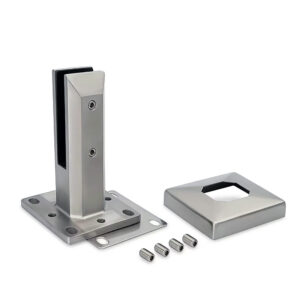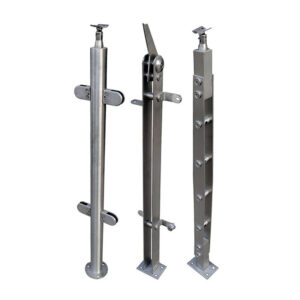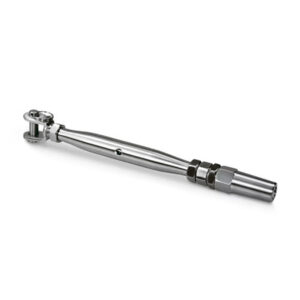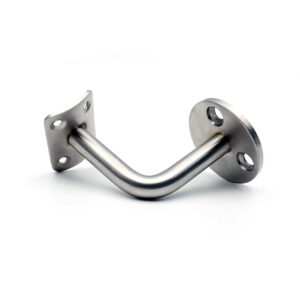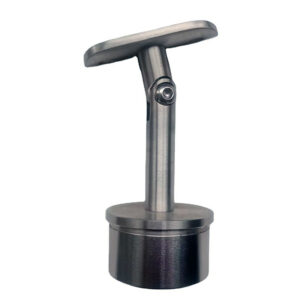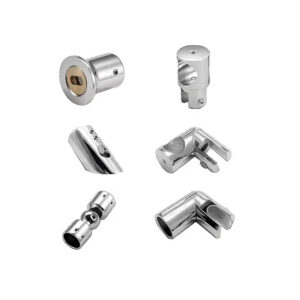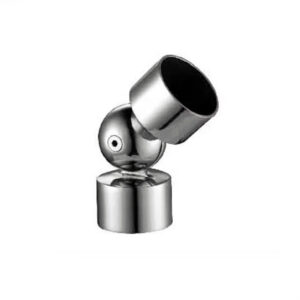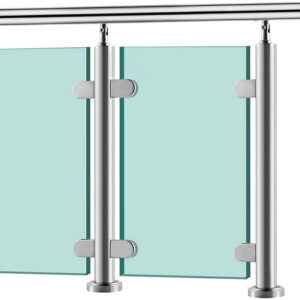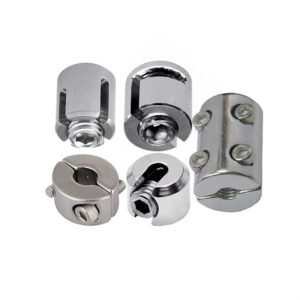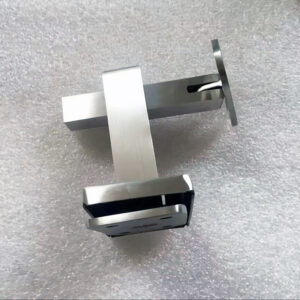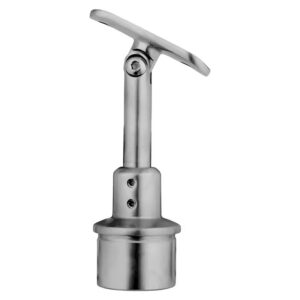After 23 years manufacturing railing systems, we’ve learned what separates reliable industrial safety railings from equipment that creates more problems than it solves. The difference isn’t just in the steel grade or surface finish—it’s in understanding how these systems perform in real industrial environments where safety compliance, installation efficiency, and long-term durability determine project success.
Industrial facilities need railing solutions that meet stringent safety codes while handling the practical realities of harsh environments, heavy use, and demanding maintenance schedules. Esang Metal has built our manufacturing expertise around these requirements, developing modular systems that streamline installation without compromising performance.
Core Industrial Safety Railing Systems
Heavy-Duty Handrail Systems
Our industrial handrail systems handle the demanding requirements of manufacturing facilities, processing plants, and infrastructure applications. Wall-mounted, post-mounted, and continuous systems use standardized connections that reduce field assembly time while meeting load requirements up to 200 pounds per linear foot.
The modular design philosophy eliminates custom fabrication delays that plague industrial projects. Standard mounting brackets accommodate various post spacings, while adjustable components handle field conditions without engineering delays. Contractors report installation time reductions of 30-40% compared to traditional welded systems.
Heavy-Duty Railing Posts & Components
316L stainless steel posts engineered for industrial environments resist corrosion from chemicals, saltwater, and extreme temperatures. Post diameters from 1.5″ to 3″ accommodate different load requirements, with mounting options for concrete, steel, and existing structures.
Rail components use precision manufacturing tolerances that ensure consistent fit across large installations. This precision manufacturing approach, developed over 23 years of industrial projects, eliminates the field adjustment time that adds cost and delays to railing installations.
▶ Get Technical Specifications ◀
Industrial Glass Railing Hardware
Glass panel systems combine safety compliance with visibility requirements in control rooms, observation areas, and administrative sections within industrial facilities. Structural glazing clamps, spigots, and base shoes handle tempered and laminated glass panels while maintaining structural integrity under dynamic loads.
Our glass hardware systems accommodate thermal expansion and building movement—critical factors often overlooked in industrial applications. The hardware maintains seal integrity and structural performance through temperature cycles from -40°F to 180°F.
Cable Railing Systems for Industrial Applications
Cable railing offers cost-effective safety barriers for large industrial areas where traditional rail systems become prohibitively expensive. Through-post cable systems maintain proper tension under varying loads, with hardware designed for tool-free adjustment during maintenance cycles.
Industrial cable systems use marine-grade 316 stainless cable with protective coatings for chemical resistance. Tensioning hardware allows field adjustment without specialized tools, reducing maintenance complexity and cost.
Material Specifications for Industrial Performance
| Material Grade | Application | Corrosion Resistance | Cost Factor | Typical Service Life |
|---|---|---|---|---|
| 304 Stainless | Interior industrial, dry environments | Good | 1.0x | 15-20 years |
| 316 Stainless | Exterior, mild chemical exposure | Excellent | 1.3x | 20-25 years |
| 316L Stainless | Chemical plants, marine environments | Superior | 1.5x | 25+ years |
| Duplex 2205 | Extreme chemical/temperature conditions | Outstanding | 2.2x | 30+ years |
Surface treatments impact both durability and maintenance requirements. Brushed finishes hide minor scratches and wear patterns common in industrial environments, while maintaining the corrosion resistance essential for long-term performance.
“Industrial safety fabrication 316L grade shows 40% better corrosion resistance in chemical processing environments compared to standard 316 stainless.” —Industrial Materials Testing Laboratory
Load Capacity and Code Compliance
Industrial safety railings must meet or exceed IBC, OSHA, and facility-specific load requirements. Our systems handle concentrated loads up to 200 lbs and distributed loads up to 50 lbs per linear foot, with safety factors appropriate for industrial environments.
| System Type | Concentrated Load | Distributed Load | Post Spacing | Installation Time |
|---|---|---|---|---|
| Standard Handrail | 200 lbs | 50 lbs/ft | 6-8 feet | 2-3 hours/100 ft |
| Heavy-Duty Post | 300 lbs | 75 lbs/ft | 8-10 feet | 1.5-2 hours/100 ft |
| Cable System | 200 lbs | 40 lbs/ft | 10-12 feet | 1-1.5 hours/100 ft |
| Glass Panel | 200 lbs | 50 lbs/ft | Panel width | 3-4 hours/100 ft |
Real Industrial Applications
Manufacturing and Processing Facilities
Chemical processing plants require railing systems that resist aggressive chemicals while maintaining structural integrity. Our 316L fabrication handles exposure to acids, caustics, and solvents common in industrial processes. A recent petrochemical facility installation using custom industrial railing components has operated for eight years without maintenance beyond routine cleaning.
Platform railings in manufacturing facilities handle frequent contact with equipment, materials, and personnel. The modular design allows sections to be removed for equipment access, then reinstalled without specialized tools or permanent modifications to the structure.
Warehouse and Distribution Centers
Large-scale warehouse operations need cost-effective safety barriers for elevated work areas, loading docks, and mezzanines. Cable railing systems provide required fall protection at 60% the cost of traditional rail systems, with installation times that don’t disrupt ongoing operations.
Distribution centers benefit from standardized railing components that can be relocated as facility layouts change. The precision industrial hardware approach ensures components remain compatible across different configurations and expansion phases.
Infrastructure and Utilities
Water treatment facilities, power generation, and municipal infrastructure require commercial industrial safety systems that perform reliably in outdoor environments with minimal maintenance. Our 316 stainless systems handle temperature extremes, UV exposure, and chemical treatment processes.
Bridge and elevated walkway applications demonstrate the durability advantage of precision manufacturing. Standardized connections eliminate welding repairs that create weak points, while modular design allows section replacement without structural modifications.
“ODM industrial railing manufacturing capabilities reduced our project timeline by three weeks while improving quality consistency across multiple installation phases.” —Industrial Construction Management Association
Marine and Coastal Industrial Facilities
Offshore platforms, port facilities, and coastal processing plants create the most demanding service conditions. Our 316L stainless systems resist saltwater corrosion while handling dynamic loads from wind, waves, and equipment operation.
A Gulf Coast refinery installation has operated for 12 years in direct saltwater exposure with only scheduled maintenance. The precision manufacturing tolerances prevent crevice corrosion that destroys lesser systems within five years.
Installation and Engineering Support
Modular Installation Advantages
Pre-fabricated components eliminate field welding and reduce installation time by 40-50% compared to traditional methods. Standard connections accommodate normal construction tolerances without custom modifications, while adjustable mounting hardware handles real-world conditions.
Installation crews report significant time savings using our modular approach. A recent 2,000-foot warehouse installation required only two technicians over four days, compared to traditional estimates of six technicians over eight days.
Engineering and Design Support
Our 23 years of manufacturing experience includes engineering support for complex installations. We provide load calculations, connection details, and material specifications that satisfy building officials and facility engineers.
Design assistance includes 3D modeling for integration with existing structures, material optimization for specific environments, and installation sequencing that minimizes disruption to ongoing operations.
| Installation Phase | Traditional Method | Modular System | Time Savings |
|---|---|---|---|
| Site Preparation | 2-3 days | 1-2 days | 40% |
| Component Assembly | 5-7 days | 3-4 days | 45% |
| Final Adjustment | 1-2 days | 0.5-1 day | 50% |
| Quality Testing | 1 day | 0.5 day | 50% |
Frequently Asked Questions
How do I select the right stainless steel grade for my industrial application?
Material selection depends on environmental exposure and budget constraints. 304 stainless works well for interior industrial applications with normal humidity and temperature. 316 stainless handles outdoor exposure and mild chemical environments. 316L provides superior corrosion resistance for chemical processing and marine environments. Our engineers can review your specific conditions and recommend optimal materials based on 23 years of application experience.
What installation timeline should I expect for large industrial projects?
Installation time depends on system complexity and site conditions. Standard handrail systems typically install at 300-400 linear feet per crew per day. Cable systems install faster at 400-500 feet per day. Glass panel systems require more time at 200-250 feet per day. Our modular approach consistently reduces installation time 30-40% compared to traditional welded systems.
How do modular systems handle building movement and thermal expansion?
Industrial buildings experience significant thermal cycling and structural movement. Our connection hardware accommodates ±1/4″ movement without losing structural integrity. Expansion joints at 40-foot intervals handle thermal expansion, while flexible mounting systems absorb building movement. This engineering approach prevents stress concentrations that cause premature failures.
What maintenance requirements should I plan for different railing systems?
Maintenance requirements vary significantly by environment and material selection. Stainless steel systems in normal industrial environments need only annual cleaning and inspection. Chemical processing facilities may require quarterly inspection with semi-annual detailed cleaning. Our systems are designed for standard maintenance tools and procedures, avoiding specialized equipment or procedures that increase maintenance costs.
▶ Get Application-Specific Guidance ◀
How do your systems compare to competitors in terms of total cost of ownership?
Total cost includes material, installation, and maintenance over the system lifetime. Our precision manufacturing reduces installation time, which often represents 40-50% of total project cost. Higher material quality reduces maintenance frequency and extends service life. While initial material cost may be 10-15% higher than economy systems, total cost of ownership typically runs 20-25% lower over 15-year service life.
Can existing railing systems be upgraded with your components?
Many existing installations can incorporate our standardized components for repairs or expansions. Compatibility depends on existing post spacing, mounting methods, and structural adequacy. Our engineering team can evaluate existing systems and recommend upgrade approaches that maximize component compatibility while ensuring code compliance.
Technical Support and Project Consultation
Industrial safety railing projects require technical expertise that goes beyond product specifications. Our team provides engineering support, material selection guidance, and installation planning based on 23 years of manufacturing experience across diverse industrial applications.
We work directly with facility engineers, contractors, and safety coordinators to develop railing solutions that meet specific operational requirements while maintaining cost effectiveness. This collaborative approach ensures systems perform as designed while meeting project schedules and budgets.
“Precision industrial hardware systems delivered 15% time savings and eliminated field modification costs that typically add 20-30% to railing project budgets.” —Industrial Safety Equipment Association
▶ Connect with Our Engineering Team ◀
Industrial safety railings represent a critical investment in facility safety, regulatory compliance, and operational efficiency. The right system choice impacts not only initial project cost but ongoing maintenance requirements and long-term performance. Our manufacturing expertise and technical support help ensure your railing investment delivers the reliability and durability your industrial operation demands.
